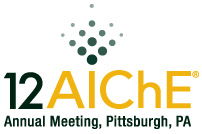

Hydrogen is a prominent fuel for a renewable and environment-friendly energy carrier. It can simultaneously reduce a country's reliance on foreign oil and considerably reduce greenhouse gases. Significant advances have been made in the use of hydrogen as a transportation fuel and a fuel for power generation. Hydrogen can be used in an internal combustion engine or a fuel cell to generate power. A number of hydrogen fueling stations are under construction to fuel hydrogen-driven vehicles. It would be essential to ensure the safety of hydrogen station equipment and operating procedure in order to prevent any leak and explosions of hydrogen: safe design of facilities at hydrogen fueling stations e.g. pressurized hydrogen leak from storage tanks. Several researches have centered on the behaviors of hydrogen ejecting out of a set of holes of pressurized storage tanks or pipes. Y. Lee et al. [1] have developed an effective operator training program providing the safety information and the public relations for the safer usage of hydrogen at hydrogen fueling stations. Some studies related to the safety of hydrogen stations have been concerned with the diffusion of leakage, explosion, deflagration or detonation of hydrogen and jet flames from hydrogen fueling stations [2].
This work focuses on the experiment and 3D simulation of hydrogen leak scenario cases at a hydrogen fueling station, given conditions of a set of pressures, 100, 200, 300, 400 bar and a set of hydrogen ejecting hole sizes, 0.5, 0.7, 1.0 mm. The physical points for probing hydrogen concentrations along with the centerline of leak jet stream are positioned at a set of horizontal distances away from the hydrogen cylinder; 1, 3, 5, 7 and 9 m. Hydrogen concentrations are measured from 5 samplers and collected from 5 probe points. In this work, the simulation is performed using FLACS because one of the primary aims of this study is to identify safe distances in case of hydrogen explosion and FLACS, a CFD tool designed to simulate behaviors of both leak and explosion, is used to calculate the concentration profile of high pressure hydrogen in released jet stream. The simulation results are validated with experimental data and compared with those of previous study [3]. The simulation is based on real 3D geometrical configuration of a hydrogen fueling station that is being commercially operated in Korea. The simulation results are validated with hydrogen jet experimental data to examine the diffusion behavior of leak hydrogen jet stream.
The safety distance is defined as a distance between a major facility and building where people reside. Each nation has its own standard for the safety distances. It is defined as a distance at which the allowable burst pressure of 0.1226 bar is considered on the premise that it will not cause any human damage to the surroundings of the business or any property loss except minor ones. To identify the safety distances in hydrogen fueling stations, explosion scenario-based dynamic simulation is made, given a layout of facilities comprising the station. Hydrogen blast pressure profiles are calculated in case of explosion using FLACS, which provides information on the distribution characteristics of blast pressure through geometric facility configurations, and the directionality and development of explosion. 3D Simulation results of scenarios are shown in Fig. 1. Finally, a set of marginal safe configurations of fueling facility system are presented, together with an analysis of distribution characteristics of blast pressure, directionality of explosion. This work makes an important contribution to an enactment of official hydrogen safety distance in Korea being in the absence of such a standard as well as marginal hydrogen safety design for hydrogen fueling stations, enabling to keep a reasonable balance between less construction cost and high safety.
Fig. 1. 3D Simulation results of scenarios
REFERENCES
[1] Lee YH, Kim JK, Kim JH, Kim EJ, Kim YG, Moon I. Development of a web-based 3D virtual reality program for hydrogen station. Int J Hydrogen Energy 2010;35:2012-8.
[2] Zheng J, Bie H, Xu P, Liu P, Zhao Y, Chen H, Zhao L. Numerical simulation of high-pressure hydrogen jet flames during bonfire test. Int J Hydrogen Energy 2012;37:783-90.
[3] Kim EJ, Lee KW, Kim JS, Lee YH, Park JD, Moon I. Development of Korean hydrogen fueling station codes through risk analysis. Int J Hydrogen Energy 2011;36:13122-31.

